The first flowers of spring are one of nature’s greatest gifts. The first sight of daffodils in the park signals the nights are finally getting longer and the weather is finally getting warmer.
But the first blooms of spring are more than just aesthetically pleasing splashes of vibrant colour after a dark and cold winter. They are vitally important as pollinators for bumblebees who rely on the earliest spring flowers as they come out of winter hibernation for pollen and nectar. These rich sources of energy help the bees to fly, find mates and start laying eggs. It also helps the queens to grow their colonies.
The nectar of the spring flowers is also a vital source of food for wasps, flies, beetles and butterflies. Let’s take a look at some of the first flowers to bloom in spring.
The First Flowers of Spring
There are lots of flowers that will start to grow as spring starts. Here are some of the most popular as well as some hidden gems!
Daffodil | Narcissus
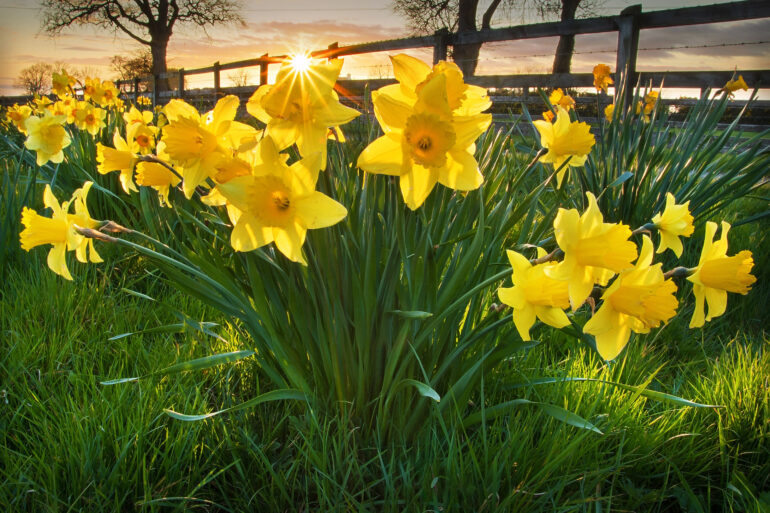
Daffodils (Photo: Alan Hopps via Getty Images)
One of the very earliest spring flowers, daffodils are one of the easiest flowers to grow. They’re pretty hardy and if you plant them in September, they’ll be flowering by February or March. They can also be white and salmon-pink, but it’s the classic yellow variety that truly signals the start of spring.
Crocus | Crocus tommasinianus
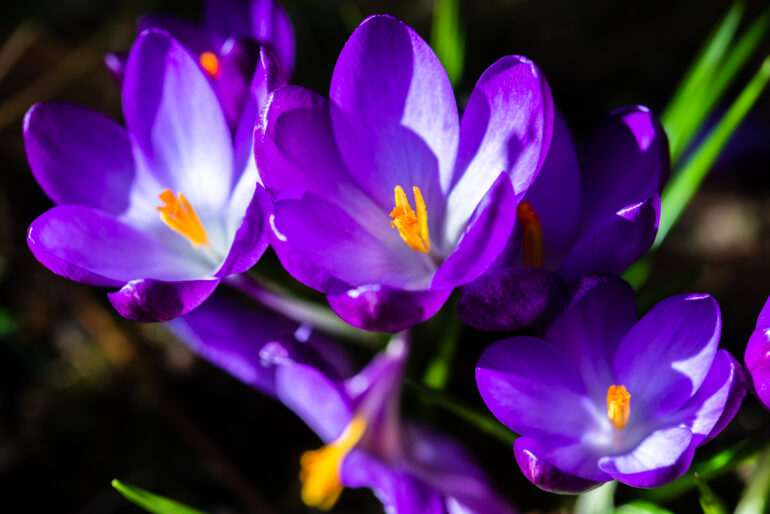
Flowering Crocus (Photo: Tim Grist Photography via Getty Images)
Crocuses are one of the most pollen-rich of the first blooms of spring and are like manna from heaven for queen bees. If planted between the end of September and early November you’ll likely see the wonderful purple leaves and the stunning orange pistil between February and April.
Hyacinth | Hyacinthus

Multicolored hyacinths (Photo: Sarsmis via Getty Images)
Hyacinths are pretty and smell lovely. It’s as if the hyacinth is the very definition of spring! They work equally as well in pots as they do in the ground, and they come in lots of different colours. If planted in autumn they’ll usually flower in March or April. The hyacinth may not be the first flower of spring but it is certainly one of the most popular.
Iris | Iris reticulata
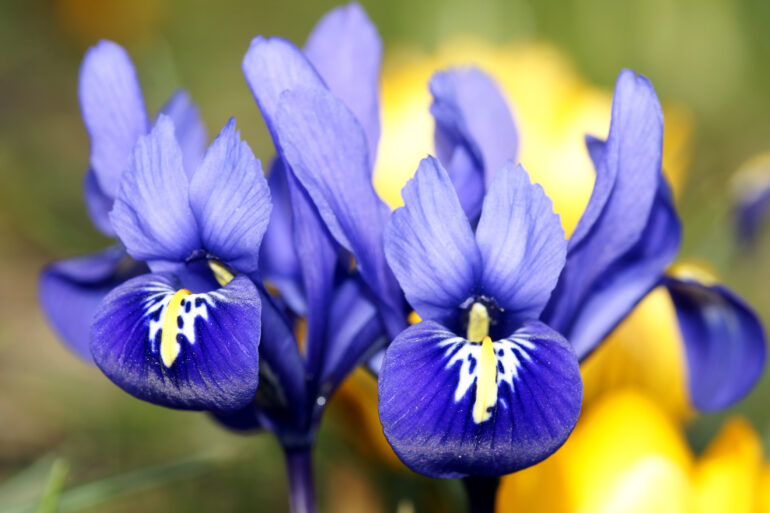
Iris flowers (Credit: schnuddel via Getty Images)
For a vibrant splash of colour and a delicate yet unmistakable fragrance, the iris is hard to beat. They’re small but perfectly formed and ideal for window boxes if space is at a premium. Depending on when they’re planted, they’re often one of the first flowers to bloom in spring and have been known to flower as early as January.
Forsythia | Forsythia

Blooming forsythia (Photo: Anita Kot via Getty Images)
Forsythia is more of a shrub but it produces a wonderful abundance of bright yellow flowers along its branches that make your garden come alive! It’s easy to grow and usually one of the earliest spring flowers. It’s often in full bloom by late March or early April and traditionally used in Easter floral decorations.
Alpine Heath | Erica carnea
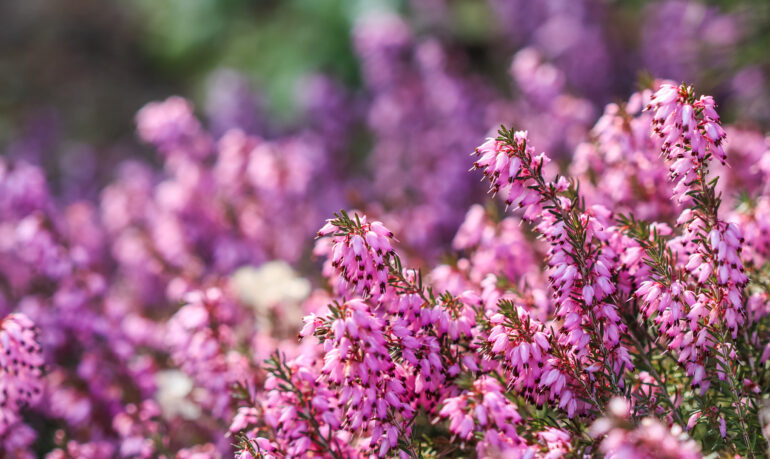
Erica carnea (Photo: Volha Halkouskaya via Getty Images)
Also known as winter-flowering heather, Alpine Heath is an evergreen that flowers in late winter. Its pink flowers give a much-needed splash of pinks, purples and magentas when nothing else is ready. By the time the first flowers of spring are starting to bloom, this hardy soul will often be awake!
Snake’s Head Fritillary | Fritillaria meleagris
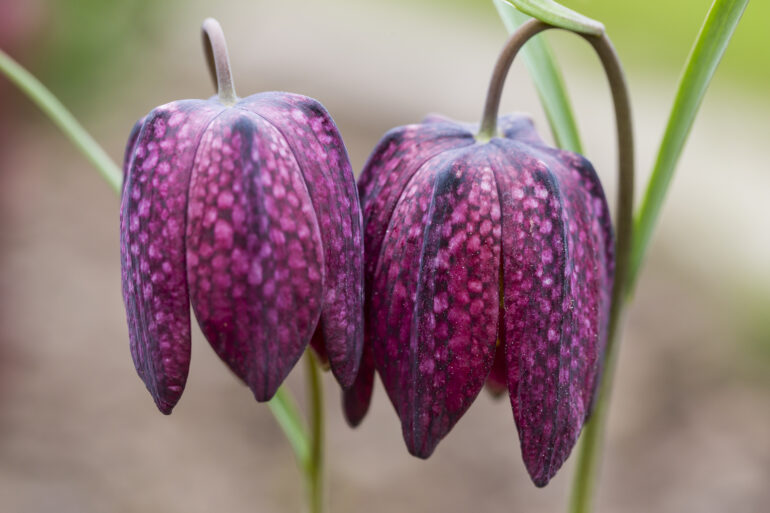
Snake’s Head Fritillary (Photo: Westend61 via Getty Images)
Of all the first flowers of spring, this member of the lily family is said to be one of the most beautiful. The flowers are usually pink or magenta and the checkerboard pattern gave rise to the name chess flower. It is also called frog-cup, guinea-hen flower and chequered lily. It usually flowers from March to late-May.
Primrose | Primula vulgaris

Primrose (Photo: martinrlee via Getty Images)
Just like daffodils, the primrose is a British classic and usually one of the first flowers to bloom in spring in the UK. In fact when you think of spring flowers, the primrose is always near the top of the list. As delicate as it looks, it’s tough as old boots and it can often withstand snow and frost. As well as your garden, you can find them wild in hedgerows and woodland environments and they usually start to flower in February. These are just some of the earliest UK spring flowers.








